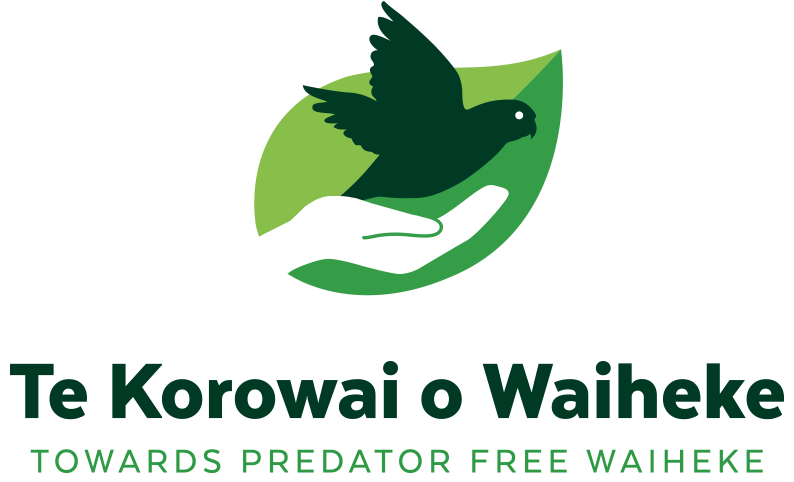A day in the life of Te Korowai o Waiheke's Monitoring Technician, Charlie
A day in the life of Charlie Thomas: Te Korowai o Waiheke’s Monitoring Technician.
What does your day-to-day look like?
My day can be from one extreme to another, whether it is tramping through the bush to check bait stations and monitoring devices or stuck to my computer screen analysing thousands of pictures of rats. I have a good balance of enjoying the very physical outdoor work, processing data and creating content about our taonga species.
How did you get into this type of work?
Charlie servicing a bait station
I have had an interest in conservation work my whole life, starting with my first stoat trap in line in Fiordland when I was nine while on the hunt for whio ducks. I began monitoring seabirds at Tāwharanui when I was 14 and left school to pursue a full time job in conservation when I was 17.
What has your previous work experience looked like?
Conservation work in every form, from marine conservation, habitat restoration, educational work and now predator eradication. I have worked all over the Hauraki Gulf as well as the remote parts of the Northwestern Hawaiian islands.
What attracted you to working in conservation?
Being able to work outside, be active and have a job that has a positive impact on te taiao. Experiencing our native wildlife up close everyday is an amazing reminder of how important conservation work is.
How did you get to Waiheke?
I first moved to Waiheke during September of 2021 to be a track maker for the rat pilot, I have now enjoyed living here for over a year.
What’s the weirdest job you’ve had?
Most of my jobs have been pretty unusual, pulling dumped shopping trolleys out of rivers for a harbour clean up crew and counting albatross chicks on one of the most remote islands in the world are definitely up there!
How long have you been working in conservation?
The first proper project I had the privilege of being involved in was 11 years ago, since then conservation work was a part of everyday life. I have been able to work full time in conservation for the last 4 years now and hope to continue for the rest of my life!
What’s your best work story at Te Korowai o Waiheke?
One of the more unusual and exciting things I got to work on was identifying the sex of a stoat that was caught and was too degraded to identify. I was able to remove, clean up and reconstruct the skull of the stoat to take measurements from points between the eyes. This, unfortunately, was also too ambiguous to confirm the sex so I then dissected the animal to look for its baculum and any other distinguishing parts. We were able to finally settle on identifying it as female, which was very exciting!

